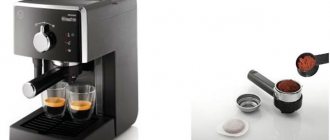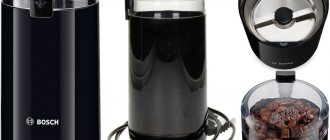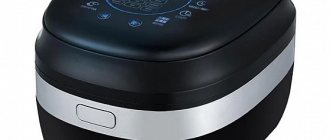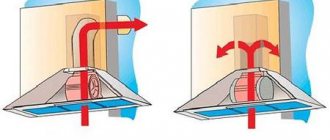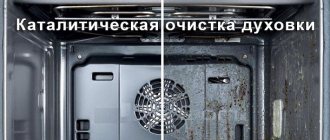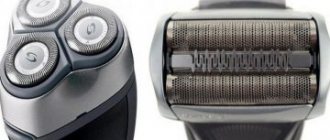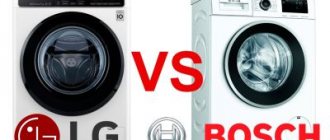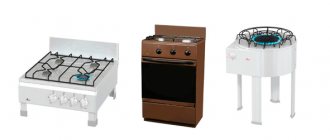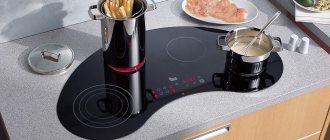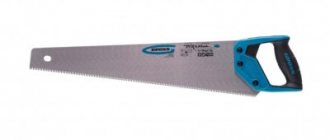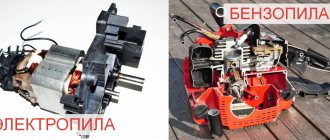Prices
In short, a bean coffee machine is like a laser printer: expensive, but you can make the most budget-friendly coffee. A capsule coffee machine, in contrast to a “regular” coffee machine, is like a jet coffee machine: it’s cheap, but the capsules will more than make up for the cost of a grain coffee machine.
Capsule
Coffee makers are divided by type of capsule system and each is produced by several companies. Moreover, the shapes of capsules for systems almost always differ: a kind of “coffee slavery” forces you to choose not so much from the coffee makers themselves, but from the range of costs and flavors of capsules for them.
Taking all this into account, the range of prices for capsule devices is simply enormous, so the most obvious way is to go through the main systems.
- Nespresso. From 5000 to 45000 rub. for the car. And a lot - for original capsules (40-50 rubles/piece), which are sold only in original stores. But Nespresso is the record holder for alternative capsules. For example, the companies Cafe Royal, Julius Meinl, Coffesso, Oquendo, Porto Rosso, and the domestic “Moscow coffee shop on shares” sell them for 15-40 rubles.
- Dolce Gusto. 4000-20000 rub. coffee machine. Capsules cost 18-25 rubles, a drink with chocolate or milk costs up to 50 rubles. per cup.
- Tassimo. Perhaps the most affordable are 3000-9000 rubles. But capsules cost 25-35 rubles, milk “luxuries” cost twice as much.
- Cremesso. Rare, but worthwhile system. From 5,000 to 20,000 rubles, plus about 30 rubles. per serving of coffee.
- Caffitaly System. Prices range from 8,000 to 20,000 rubles, the company has its own line of Ecaffe capsules, 30-35 rubles each. The alternative ones are not much cheaper and, in fact, complement the tastes of the original ones; for example, Tchibo or Espresso Club.
- Bialetti. Perhaps the most notable ones are their design and quality; 10,000-20,000 rubles, at frequent promotions you can find a car for 5,000 rubles. Capsules only native ones - 18-32 rubles. a piece.
The cost of capsule-type household coffee makers starts from 3,000 rubles, and at sales it is even cheaper. For many, the low price is the main argument that a capsule coffee machine is better than a grain coffee machine. At the same time, the cost of some professional models easily reaches 100,000 rubles.
Cereals
They can also be simple and sophisticated - with a grain selector, functions such as self-shutdown, settings from a smartphone.
The average cost of a decently equipped unit is 40,000 rubles, the simplest – up to 10,000 rubles. A cup of coffee costs half as much as a capsule cup – about 10 rubles.
- Don't miss: What types of coffee machines are there and how they differ
Prices for top grain coffee machines from well-known manufacturers:
- Delonghi ECAM – RUR 45,000-140,000;
- Saeco – 40000-150000 rub.;
- Bosch – 50,000 p.;
- Philips – 40000-52000 p.;
- Melitta Caffeo Solo – 32000 rub.;
- Redmond – 10000 p.;
- Krups – 35000-40000 p.
In principle, among both capsule and grain coffee machines there are coffee machines for every budget; the main thing is to choose the most comfortable one.
Types of coffee machines:
A common feature of most coffee machines of various types is the need to add coffee and water, because these two ingredients are the main elements of creating a good drink. There are many ways to brew different types of coffee, the most popular ones are listed below, which are also included in our ranking.
Automatic espresso machine
An excellent alternative to capsule coffee machines, although they require knowledge of the operating instructions and familiarity with the equipment. For economic reasons, this is the most commonly chosen type of coffee preparation in the office and at home.
Thanks to its many functions, you can brew many types of coffee using one type of bean, and the coffee will be perfect and just the way you intended it. Good coffee machines are equipped with a milk clamp, which allows you to prepare more delicate varieties of the drink, for example, a three-layer latte macchiato . When choosing an automatic coffee machine from a rating, there are a few basic controls to keep in mind: adding water, adding beans, cleaning, descaling, and keeping milk cool.
Manual espresso machine
A mini espresso machine is a type of portable espresso machine that is about the size of a liter water bottle. It allows you to brew one cup of coffee and resembles a thermos. Travel espresso machines can be divided into two types: manual presses and electric mini espresso machines for popular capsules. A coffee machine with small dimensions and good quality allows you to pump boiling water under pressure up to 18 bar. All thanks to a hand pump that creates high pressure inside, the flow of boiling water through the ground coffee is like an automatic machine in 20-30 seconds, which is exactly how long it takes to extract only the most valuable ingredients from the coffee beans.
Coffee machine with coffee grinder
A coffee bean machine requires grinding the coffee to the required thickness so that high-pressure boiling water flushes the essential coffee oils, alkaloids, and sugars from the beans. The built-in coffee grinder of an automatic coffee machine means the convenience and reliability of always freshly ground coffee. A coffee machine with a ceramic grinder ensures high durability of the ceramic elements, provided that there are no metal elements between the coffee beans. For this reason, it is not a good idea to buy the cheapest coffee available on the market that is not rigorously x-rayed before packaging. When refilling the coffee container, it is also worth paying attention to whether any small parts have been released from production that could block the coffee machine and grinder.
Automatic coffee machine
An automatic coffee machine is a little more complicated than capsule coffee machines, but the slightly higher price of even the models in the rating is offset by the price of coffee beans, which is more economical than bags or capsules per cup.
Advantages and disadvantages of automatic coffee machines
Undoubtedly, the disadvantage of automatic coffee machines is the need for periodic maintenance and cyclic descaling, as well as the high price that you have to pay for multifunctionality. One of the advantages, of course, is that you can brew coffee in a coffee machine with a grinder with one click. Unlike semi-automatic coffee machines, you do not need to determine the brewing temperature of the coffee beans, adjust the boiling water pressure and stir the coffee in the filter, all these actions are performed automatically by the machine.
The user must monitor the level of water and grain in the containers, and in more powerful machines, the fresh milk in the frother. On average, the machine needs to be descaled every month, and this is also one of the functions that automatically starts and alarms after setting the water hardness. Simply remove the filter from the water tank and add descaling agent to the full water tank, after selecting the cleaning option, the machine only needs to be replaced within 30 minutes, acid solution for water, and it is ready to use again.
Coffee machine with coffee grinder and milk container
An espresso machine with grinder and frother is the ideal way to quickly prepare refreshing machine coffee. Coffee machines can remember their favorite drinks and the capacity of the mug or glass to always recreate the same delicious coffee taste. If you want to be confident in choosing a proven model, you should use our opinions and ratings, which were prepared based on suggestions from professional baristas and economic conditions.
Coffee machine with milk wand or milk frother
Coffee mousse is not only a distinctive layer that can be sprinkled lightly or added to a unique pattern, it is a layer that adds lightness and creaminess . It is especially appreciated by people who are not particularly interested in traditional forms of coffee or espresso due to their intense flavor.
The ideal coffee foam should be thick, with small air bubbles. Large air bubbles provide a creamy taste and a drying sensation. Overheated foam acquires a bitter taste, this happens after exceeding 70 degrees Celsius, when the fat is more noticeable. The taste of superheated foam is no longer velvety and sweet with a moist consistency, but dry and shallow. Latte and cappuccino makers can use two popular foaming systems:
The frothing tube is most often used by professionals because you need to determine the ideal degree of milk froth, so crank machines are mainly equipped with this solution for baristas. If you need to figure out the ideal foam structure yourself, it's also easy to overheat milk. Undoubtedly, the advantage of the frothing tube is that we always pour in fresh milk for frothing. The disadvantage of the frothing tube is that it needs to be cleaned, the milk left in the tube dries out, there is an unpleasant smell and the development of bacteria.
You might like 50 smart gadgets for a smart home 2020-2021
The frother in the machine is a very convenient option, it allows you to adjust the intensity of the foam using a knob without the fear of overheating the milk, which ruins its taste and changes the taste of the entire coffee. The disadvantage of this solution is the need to store milk, which quickly spoils outside the refrigerator, especially on hot days. Bad milk requires replacement and frequent washing of the container. Some solutions allow you to store milk in a container directly in the refrigerator for up to two days, increasing its availability.
What kind of milk to whip - latte recipe
Latte coffee requires milk and preferably in foamed form, then it creates a three-layer composition that is pleasing to the eye. Baristas around the world agree that cow's milk is the most popular for lattes, this is due to the fact that the whitening product is readily available.
Which latte coffee is milky and what is the percentage of fat?
Cow's milk is sold in bottles or cartons with varying percentages. As baristas prove, cow's milk should contain 3-4% fat , why so much?
Skim milk with a low fat content causes the formation of large air bubbles, the foam is loose and falls off quickly, with milk above 4% foaming is difficult.
Coffee milk temperature
Based on my own experience, in order to prepare a thick and appetizing foam, you should use cold milk for foaming, that is, with a temperature of about 4 degrees Celsius . Foamed milk no longer heats up as it acquires a burnt smell and bitter taste.
Convenience
Perhaps the most “broad” criterion. The qualities and functions of different coffee machines simply cannot be counted.
Process
Beans are poured into a grain coffee machine, a capsule is placed into a capsule coffee machine, water is poured in, all that remains is to select a cooking program or press the start button.
Coffee beans can take longer to brew, up to 2 minutes, but you can adjust the strength of the coffee yourself. The capsule version is administered in 30-50 seconds, including complex drinks, but the strength depends on the fullness of the tablet and varies greatly among manufacturers.
The variety and availability of coffee beans is a big plus of grain coffee machines. But the capsule version is easier to use, including in terms of configuration, but also “poorer” in functions. The grain one, the more sophisticated it is, the more skills it requires from the owner, but it can perform a bunch of different tasks.
Size and material
Capsule machines are more compact and can be extremely miniature and shaped. Cereals are not suitable for a tiny kitchen or work table - dimensions such as an oven or a medium bedside table. Any coffee machine can be anything on the outside - metal, plastic or even wood, but on the inside - only metal, brass, otherwise a taste in the coffee cannot be avoided.
Care
Capsule ones are washed very rarely, and for most, this function is generally automatic. Repairs are cheaper, but due to scale they break more often. Grains need to be disassembled and parts washed every 7-10 servings. Their repairs are more expensive, but less frequent - they are more reliable.
Power
The higher the power, the faster the grinding and cooking process goes. Ideal for capsule - from 1200 W, for grain - up to 2000 W. The pressure in the pump for a grain coffee machine is at least 17 bar, for a capsule coffee machine - at least 15. The productivity of the former is higher, but it is a priori noisier due to the grinding of beans. The second, with rare exceptions, is almost silent.
Additional functions
Depending on the model, capsule or grain coffee machines can be equipped with:
- cappuccino maker for different types of coffee;
- two cups at the same time;
- regulation of the height of the tray (for pouring into different dishes);
- touch panel;
- recipe programs with memory;
- fault indicators;
- automatic loading of water through the water supply system;
- lighting, heating and more.
As a result, the bean coffee machine looks more solid, better built, but more complex (as a consequence, however). Capsule is simpler, and this is not always good. Fortunately, in both cases there are models equipped to the required level.
Which machine is better - capsule or regular: comparative characteristics
Price
The price of a device for preparing coffee drinks depends on the brand, model, volume, number of additional accessories, and size.
Devices for capsule drinks are cheaper than cereal ones. The average cost varies from 5,000 to 10,000 rubles. There are products on sale for 2000-2500 rubles, but with a minimal set of functions. Professional units for coffee shops will cost 120,000-150,000 rubles.
Interesting! How to clean a coffee machine with citric acid
The cost of grain coffee machines starts from 15,000-17,000 rubles for simple models with a built-in coffee grinder. Professional units for coffee shops cost more than a million rubles.
When purchasing a capsule device, you will have to regularly spend money on capsules. In this way, companies compensate for the low cost of the devices. On average, 100 grams of regular grains are 1.5-2 times cheaper than the same 100 grams in capsules.
If you decide to purchase an expensive capsule device, remember that cheap capsules will not work and you will not be able to reduce costs.
Which coffee machine is more economical?
In terms of savings, grain machines are more profitable. This is due to the fact that manufacturers of such equipment make money from their sales, and capsule manufacturers make money from coffee sales. In addition, you will not be limited to the varieties of beans from one company and will be able to try different types.
Let's show the difference in benefits using a specific example.
On average, 7 grams of grains are consumed per serving of drink in a grain appliance. A pack weighing 250 grams yields 35-36 servings. If a pack costs 400 rubles, then the price of one serving is 10-12 rubles.
The price of one capsule varies from 20 to 45-50 rubles.
The benefit is noticeable if there are several coffee lovers in your home or office or they have different preferences.
Experiments with varieties and blends (mixtures)
It's easier to experiment with a bean coffee machine. Devices of this type will work with whatever you choose. You can stop at one variety or type of coffee, choose a new one each time, or mix several to achieve original flavors. And it doesn’t matter whether it’s expensive or cheap. In addition, each model has at least 3 degrees of strength.
Capsule coffee machines only work with “original” capsules that are suitable in size, shape and weight. If you buy a unit from a certain company, you will have to buy only branded capsules for it. Coffee boxes made by another company will not work.
Manufacturers are trying to diversify their range. But 10-20 types of capsules cannot compare with hundreds of types and varieties of coffee beans. In addition, this is a rare product; it will have to be ordered through specialized stores or the Internet.
Shelf life of different types of coffee
The shelf life of bean coffee is up to 1-2 years. But in an open package, the aroma begins to fade after 1-2 weeks.
The shelf life of ground coffee is up to 2 years. But in an open package the aroma is lost after 2-3 days.
Capsules are stored for up to 2 years. The smell is not lost thanks to the sealed packaging.
Interesting! How to properly descale a coffee maker at home
To avoid loss of aroma, store beans and ground coffee in tightly sealed bags. Even better, grind the grains 5-10 minutes before you put them in the machine. And no more than will fit at a time.
Details in the article “Shelf life of coffee beans, ground and instant.”
Which machine makes the right espresso?
Both machines prepare good, proper espresso. There is no difference between the drinks: in both cases, ground coffee beans are used, prepared under a pressure of 15 bar.
On the other hand, some devices for preparing capsule drinks have a soaking function. It allows the grains to fully develop their aroma and taste during cooking.
Noise effect
If you are a lover of silence, choose a capsule unit. It is quiet because it works with already ground beans. The noise level reaches 59-60 dB. A quiet conversation is also heard at a distance of 1 m from the speakers. Only the device “makes noise” for no more than a minute.
The grain appliance makes noise when the coffee grinder is running. Its noise level is 70-77 dB.
Which device is easier to maintain?
Both devices have built-in automatic scale and rust cleaners. The function is not available only in cheap models.
Automatic cleaning does a good job, but it's not perfect. Therefore, if you use your machine frequently, carry out “general” descaling 2-3 times a year.
To do this, use store-bought tablets or cleaning products that are suitable for the specific product. They are produced by coffee machine manufacturers. A small package may be included, but after that you will have to purchase it yourself.
You can also use folk remedies: vinegar, soda, citric acid. Find out more in the article "Review of descalers for coffee machines."
All coffee machines are collapsible, making it easy to remove large parts for washing. Do not ignore cleaning, otherwise the unit will break down due to scale. But before that, you will “enjoy” a tasteless drink, without the usual aroma.
It is easier to use a capsule device. Grain requires special settings: water temperature, grinding level, cooking time.
Which machine cooks faster?
Capsule devices work faster. A cup of espresso takes 30 seconds, other types – no more than a minute.
The preparation time for espresso in grain models is 2 minutes.
Capsule machines save time because they do not require grinding and compacting the grains, which takes about a minute. In expensive products, you will have to additionally set the settings: degree of grinding, roasting, strength, temperature. But it will take another half a minute.
The time required to care for the unit after preparing a portion also varies. In a capsule device, you need to throw away the packaging; in a grain device, you need to empty the container from under the grains.
Interesting! Coffee machine or coffee maker: which is better for the home?
What kind of water can be used
To prepare a delicious drink in any machine, purified water is suitable: filtered, bottled or boiled.
It is better not to take liquid from the tap, as it causes scale to form. And the taste of the drink can deteriorate due to the chlorine it contains.
Some brands of grain coffee machines have water filter cartridges. But they will have to be regularly replaced with new ones, and this is an additional expense.
Which is more compact?
In terms of size, machines for making coffee from capsules win. They do not have a coffee grinder or additional accessories, so they take up less space. There are models that do not exceed 15 centimeters in width.
Standard dimensions of grain devices: 25x45x40 centimeters. There must be space on the sides and top to pour water, add coffee, remove the water tank and the pulp container.
If you come across a narrow grain model of 19-20 centimeters, this means that it is 5-10 centimeters deeper.
Remote control
Let's say right away that remote control from your phone will not make it easier for you to brew coffee. But you can adjust the time and taste of the drink: strength, roasting. Therefore, this function is only available in grain machines.
Also, the remote control will notify you of the need for cleaning and help you carry it out according to the instructions, which will reduce the time spent.
Built-in technology
A built-in coffee machine is an expensive proposition. Both devices have such models.
The cost of built-in grain units varies from 180,000 to 200,000 rubles.
There are few capsule built-in devices on the market, one of them is produced by the German company Miele. Price - 200,000 rubles.
Please note that if the unit breaks, you will have to choose a new one, which should have the same dimensions.
Taste
The main advantage of coffee capsules is their tightness: they will retain the smell of freshly ground beans for 2 years. The grains, no matter how you protect the opened package, will fizzle out in a couple of months.
- Read more: How to store coffee beans after opening
But the grain machine is a real “barista’s machine”: you can adjust the volume, degree of grinding of beans, temperature and pressure, milk and foam for all types of coffee. Some models even make milkshakes.
For variety, you can combine types of coffee or sprinkle the beans with spices. In this regard, some simple cereal is better than the most complete capsule one.
The taste of coffee from capsule machines is a different story. Choosing a taste means choosing a manufacturer. For example:
- Dolce Gusto - 25 flavors, 13 of which are different types of coffee, 7 milk, 4 chocolate, tea latte with spices, cocoa. The downside is that there is only 6 g of coffee in an espresso capsule, instead of the standard 7-9 g, and instead of cream there is powdered milk.
- Nespresso – 26 flavors, 6 of them decaffeinated. 21 – classic espresso, 5 – lungo. Weight – 5 g, but the underweight is leveled out by selected raw materials. Cream is only available in models with a cappuccino maker; there is no tea or chocolate.
- Cremesso. 11 classic coffee flavors: espresso, decaffeinated, lungo, macchiato, 4 teas (black, with fruit, mint, herbs). Per serving 7 g.
- Tassimo. “Smart” machine - due to the reduced pressure of 3.3 bar, the coffee is not compressed, the taste is unusual. 14 coffee flavors, several of them with cream, plus teas and cocoa.
As for the choice between a capsule and a regular coffee machine, the first problem is only in relation to the manufacturer’s range. And the second disadvantage comes down to grain storage. Freshly ground, they are just as flavorful as the capsules.
What's the result?
If you try, you can find both a bean and a capsule coffee machine that make the same claims. But not for everything, therefore:
- if you are a gourmet, a former/future barista, you drink a lot of coffee, you are too lazy to hunt for raw materials, but not to wash your car; you are not annoyed by the sound of a coffee grinder, and you have enough space, time and money to pay for quality, choose a bean coffee machine;
- if you don’t plan to get sophisticated with flavors, are not ready to do the washing and listen to the buzzing, and periodically “getting out” raw materials is fine; If you don’t want to deal with the functions or overpay for infrequent home coffee, your option is a capsule coffee machine.
